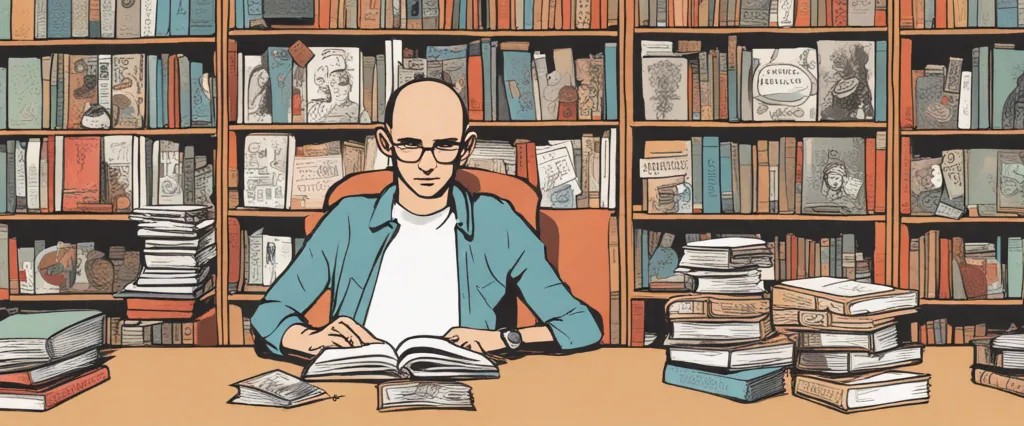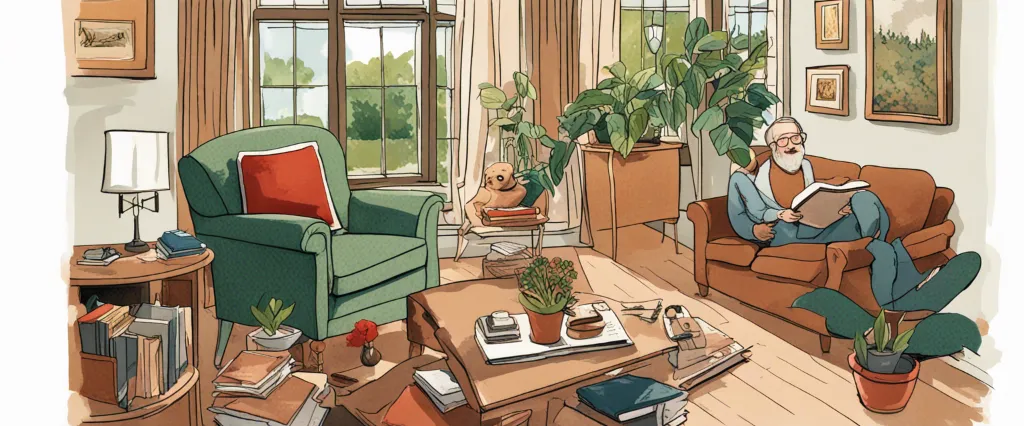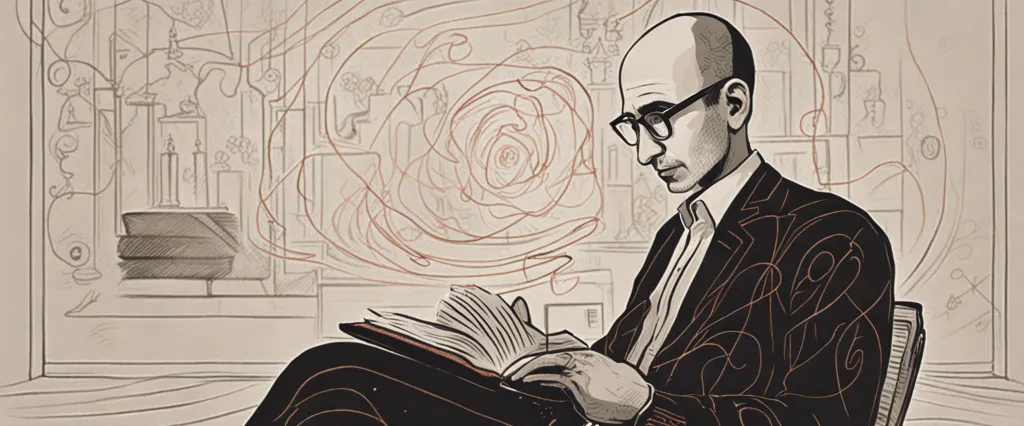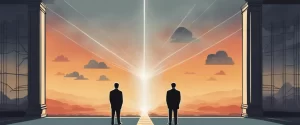
In an increasingly complex and volatile world, the pursuit of understanding has become more essential than ever. As we navigate the uncertainties of the 21st century, two remarkable authors, Yuval Noah Harari and Bill Bryson, invite us to explore the diverse realms of knowledge through their thought-provoking works. Harari’s “21 Lessons for the 21st Century” and Bryson’s “At Home” both offer profound insights into the human condition, albeit from different angles. In their distinct ways, both authors delve deep into history, culture, and science, shedding light on the intricate fabric of our existence. While Harari challenges conventional wisdom, forcing us to question established narratives, Bryson revels in the minutiae of everyday life, illuminating the extraordinary in the ordinary. By undertaking a comparative study of these two influential books, we aim to uncover the ideological divergences, thematic convergences, and intellectual revelations that emerge from their unique perspectives. Through an exploration of Harari’s scathing critique of our socio-political structures and Bryson’s meticulous dissection of the mundane world around us, we can discern a more comprehensive understanding of the challenges and opportunities that await us in the 21st century. As we embark on this comparative journey, we invite readers to join us in exploring the fascinating intersection of philosophy, history, and the human experience that Harari and Bryson so skillfully navigate.
Brief Summary of Two Books
21 Lessons for the 21st Century by Yuval Noah Harari
“21 Lessons for the 21st Century” written by Yuval Noah Harari is a thought-provoking exploration of the major challenges faced by humanity in the present century. Divided into five sections, the book delves into topics such as technology, politics, social issues, and the meaning of life in the rapidly changing world.
The first section focuses on the technological advancements that shape our lives. It covers artificial intelligence, automation, and the potential consequences of job displacement. Harari also explores the impact of algorithms and data on our privacy and decision-making processes, urging readers to become more discerning consumers of information.
The second section addresses political challenges, including the rise of nationalism and the loss of trust in political institutions. Harari criticizes the traditional views on power and sovereignty, suggesting that a global order may be necessary to tackle global issues such as climate change and nuclear proliferation.
In the third section, Harari examines societal topics such as religion, terrorism, and inequality. He questions the role of religion in the modern world, arguing that it often hampers progress and may be replaced by other belief systems. He also discusses the causes and potential solutions to inequality, emphasizing the need for a more equitable and inclusive society.
The fourth section delves into the question of “truth” in the age of misinformation. Harari analyzes the manipulation of information and the growing influence of technology platforms, urging readers to develop critical thinking skills and be vigilant about the sources of their information.
Finally, Harari explores the meaning of life and the importance of finding purpose and happiness in an uncertain future. He emphasizes the need for a global conversation about ethical and existential issues, encouraging readers to reflect on their values and the kind of world they want to create.
In summary, “21 Lessons for the 21st Century” provides a comprehensive and thought-provoking analysis of the major challenges facing humanity in the present era. Harari presents a compelling argument for the necessity of global cooperation and critical thinking while urging readers to reflect on their personal values and find meaning in a rapidly changing world.
At Home by Bill Bryson
“At Home” by Bill Bryson is a non-fiction book that takes readers on a captivating journey through the history of domestic life. Bryson focuses on his own home, a former rectory in England, and uses it as a starting point to explore various aspects of human life. From the origins of architecture and the evolution of rooms, to the development of household essentials like furniture and appliances, the book covers a wide range of topics related to our living spaces.
Bryson examines the origins and transformations of everyday objects, discussing how items such as fireplaces, beds, and toilets have evolved over time. He delves into the historical events and social changes that shaped our homes, including the influence of the Industrial Revolution, urbanization, and shifts in fashion and taste.
While exploring the house and its contents, Bryson introduces readers to the people behind these innovations and inventions, highlighting the obscure yet significant figures who made important contributions to the domestic world. He seamlessly weaves together anecdotes, historical facts, and personal reflections, making “At Home” an engaging and informative read.
Throughout the book, Bryson emphasizes the interconnectedness of domestic life and the wider world, examining how our homes are influenced by global events and trends. From the impact of colonialism on our tastes and preferences, to the role of the Victorians in shaping modern domestic rituals, he provides a comprehensive overview of the cultural, economic, and societal forces that have shaped our homes.
“At Home” offers a unique perspective on history, presenting it through the lens of the everyday, mundane aspects of our lives. Bryson’s witty and accessible writing style, combined with his meticulous research, brings to life the stories behind ordinary objects and spaces, encouraging readers to see their homes in a new light.
Comparison between Two Books

Similarities in Social Change
In both “21 Lessons for the 21st Century” by Yuval Noah Harari and “At Home” by Bill Bryson, social change is a prominent theme explored by the authors. Although the books fall into different genres – one being a non-fiction analysis of the present, and the other a historical examination of domestic life – they share some striking similarities regarding the topic of social change.
Firstly, both authors emphasize the rapid pace of social change in the modern world. Harari argues that technological advancements, such as artificial intelligence and automation, have the potential to reshape societies drastically within a short period. He explores the challenges that arise from navigating this fast-paced change and highlights the importance of staying informed and adaptable. Similarly, Bryson takes readers on a historical journey through the evolution of the home and demonstrates how societal changes like industrialization and urbanization revolutionized domestic life. Both authors shed light on the transformative nature of social change and its impact on various aspects of society.
Secondly, Harari and Bryson discuss the potential consequences of social change. Harari examines the implications of advanced technologies and their impact on employment, human relationships, and the general structure of society. He raises questions about the potential disruption caused by these advancements and addresses the need for society to address the challenges they bring forth. In “At Home,” Bryson explores how changes in domestic life shaped broader societal changes, such as the division of labor, the rise of consumerism, and the emergence of the middle class. By providing historical context, Bryson helps readers understand the long-term consequences of social change in various areas.
Furthermore, both authors touch upon the need for collective action in response to social change. Harari encourages readers to embrace the idea of global cooperation and to find common ground in addressing shared challenges. He argues that the current global issues, such as climate change and technology’s impact on job markets, necessitate collective responsibility. Similarly, Bryson highlights the significance of communal efforts throughout history, such as labor movements and social reforms, in shaping societal changes. By drawing attention to the power of collective action, both authors emphasize the importance of uniting in the face of social change.
In conclusion, “21 Lessons for the 21st Century” by Yuval Noah Harari and “At Home” by Bill Bryson share several similarities in their exploration of social change. Both books highlight the rapid pace of change, examine its consequences, and stress the need for collective action to navigate these transformations effectively. Despite their different genres, they provide valuable insights into understanding and responding to the social changes shaping our world today.
Divergences in Social Change
21 Lessons for the 21st Century by Yuval Noah Harari and At Home by Bill Bryson both explore the societal changes that have shaped our present and offer insights into the future. Despite their similarities, these texts diverge on their perspectives on social change by focusing on different aspects.
Yuval Noah Harari’s 21 Lessons for the 21st Century provides a wide-ranging analysis of various social, political, and technological challenges we face today. Harari delves into issues such as the rise of artificial intelligence, automation, and the global impact of climate change. His book emphasizes the need for individuals to develop critical thinking, adaptability, and resilience to navigate the rapidly changing world. Harari’s focus is on fostering a global perspective and understanding the shared challenges and solutions necessary for human survival and success.
On the other hand, Bill Bryson’s At Home takes a different approach to social change by being more historical and specific in its exploration. Bryson examines how the layout, design, and evolution of our homes reflect broader changes in society. He investigates various aspects of domestic life, uncovering the social, economic, and technological forces that have shaped our homes over centuries. While Harari discusses wide-reaching global challenges, Bryson’s perspective concentrates on the micro-level changes within our immediate surroundings.
Furthermore, 21 Lessons for the 21st Century seeks to challenge existing narratives and provoke critical thinking, urging the reader to question the status quo and reconsider traditional notions. Harari emphasizes the need for collective action, as he believes global problems require global solutions. In contrast, At Home focuses more on providing historical context and offering readers fascinating tidbits of information about the origins of everyday objects within the home. Bryson’s writing style is more anecdotal and often humorous, making the reader feel as if they are exploring their own home alongside him.
In terms of social change, both books aim to illuminate the influences that have shaped our present, but they differ in their approach and scope. Harari takes a broader and more global perspective, addressing pressing global challenges, while Bryson focuses on the historical changes within the domestic sphere. Consequently, their divergence lies in the breadth of their analysis and the specific lenses through which they explore social change.

Conclusion
Both “21 Lessons for the 21st Century” by Yuval Noah Harari and “At Home” by Bill Bryson are highly regarded books with different focuses.
“21 Lessons for the 21st Century” delves into the pressing issues and challenges that humanity is facing in the modern world. Harari, a renowned historian, examines topics such as artificial intelligence, terrorism, climate change, and global politics. He offers a thought-provoking analysis and raises important questions about the future.
“On the other hand, “At Home” by Bill Bryson takes a more lighthearted approach as it explores the history of domesticity. Bryson takes readers on an entertaining journey through various rooms in his own house, discussing their origins, evolution, and cultural significance. This book provides interesting insights into the history of human civilization and the way our homes reflect our values and lifestyles.
Ultimately, the choice between these two books depends on your personal interests. If you are more inclined towards exploring thought-provoking contemporary issues and the challenges facing humanity, “21 Lessons for the 21st Century” is a great choice. However, if you prefer a mix of history, culture, and humor, “At Home” provides an entertaining and educational experience.


